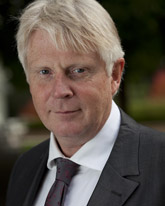
Handy Links
SLAC News Center
SLAC Today
- Subscribe
- Archives: Feb 2006-May 20, 2011
- Archives: May 23, 2011 and later
- Submit Feedback or Story Ideas
- About SLAC Today
SLAC News
Lab News
- Interactions
- Lightsources.org
- ILC NewsLine
- Int'l Science Grid This Week
- Fermilab Today
- Berkeley Lab News
- @brookhaven TODAY
- DOE Pulse
- CERN Courier
- DESY inForm
- US / LHC
SLAC Links
- Emergency
- Safety
- Policy Repository
- Site Entry Form

- Site Maps
- M & O Review
- Computing Status & Calendar
- SLAC Colloquium
- SLACspeak
- SLACspace
- SLAC Logo
- Café Menu
- Flea Market
- Web E-mail
- Marguerite Shuttle
- Discount Commuter Passes
-
Award Reporting Form
- SPIRES
- SciDoc
- Activity Groups
- Library
Stanford
Around the Bay
From the Director of the Accelerator Directorate: So… Where are we going?

Accelerator operations, accelerator research and development and technology infrastructure have been the heartbeat of SLAC. They still are, and will be for quite some time. They allow the laboratory to do much of the science that has led to past successes, and with all the work being done for the Linac Coherent Light Source, Stanford Synchrotron Radiation Lightsource, Facility for Advanced Accelerator Experimental Tests at SLAC, Next Linear Collider Test Facility, laser acceleration program and normal-conducting radio-frequency technology development, continuing success is almost certain.
In the Accelerator Directorate, there are many obvious things we have to do to fulfill the lab's mission of growing into the world's premier photon science laboratory. The path seems relatively straightforward; for example, we need to draw up an aggressive R&D plan that will continue to improve the LCLS, prepare for an even better LCLS II, and serve other national and international facilities operating free-electron lasers so that we all benefit from the experience and advancements in knowledge that we are rapidly acquiring. We want to do this research, and without question we will be funded to do it.
It takes more than this, though, to be a premier accelerator laboratory, which is in itself an important part of SLAC's mission. We are further developing technologies such as plasma wakefield acceleration and laser acceleration that will eventually allow us to recapture the energy frontier, providing particle collisions at higher and higher energies at much lower cost and in much less space. While the goal seems farfetched today, these new technologies may allow us to get there at some point. The Department of Energy's Office of High Energy Physics shares our interest in developing this area of research, and we will continue to grow it together with them.
Other technologies, such as high-gradient normal-conducting accelerators and high-power radio-frequency sources, already make up a large part of our infrastructure. They demonstrate that we are at the forefront of accelerator technology, but at the same time it is not so clear anymore who the customer for these technologies is. In the past, large construction projects like the Stanford Linear Collider, the B Factory, the LCLS and the SLAC linac provided a clear direction forward, and many techniques and technologies came out of those projects. Today it is on us to define where we want to go and successfully apply the expertise, the facilities and the staff we have to get there.
Interestingly enough, there are a lot of applications in which accelerators play a key role—for example, in homeland security and for compact irradiation sources—and while in the past it was not ours to worry about them, over the last few years it became increasingly clear that they have to become a part of our future in order to maintain and build on what we have. SLAC today is a multi-program laboratory, and in the Accelerator Directorate we all still have to learn to live the fine balance between a narrow focus on our main mission and a too-diverse program. One might not allow us to do all the things that we are good at and the other lead us to the point where we are trying to do everything but not really leading at anything.
All of this was a big topic during a recent offsite meeting of the senior management. I cannot find solutions to these challenges by myself, and the Accelerator Directorate cannot be the only place to solve them. I know this, you know this and the management team knows this. One of the most rewarding things I have learned since I came here is that the whole team is well aware of the need to work together, and they all want to help. I enjoy playing on this team and will keep you posted on the news that comes in—probably even more regularly on my blog site, where I intend to post an update every two weeks on what I have done and learned.
